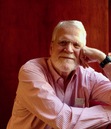Mark Scott Smith's Blog: Enemy in the Mirror, page 71
February 11, 2019
NATO
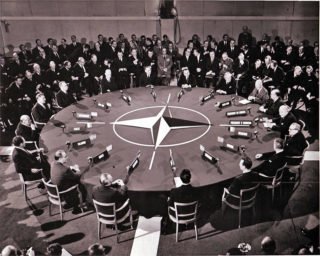
The North Atlantic Treaty Organization (NATO) was founded in 1949 as an intergovernmental military alliance between 12 North American and European countries including: Belgium, Canada, Denmark, France, Iceland, Italy, Luxembourg, the Netherlands, Norway, Portugal, the United Kingdom and the United States.
Since its foundation, other states that have joined are Greece and Turkey (1952), Germany (1955), Spain (1982), the Czech Republic, Hungary and Poland (1999), Bulgaria, Estonia, Latvia, Lithuania, Romania, Slovakia and Slovenia (2004), Albania and Croatia (2009), and Montenegro (2017).
NATO’s stated purpose is to guarantee the freedom and security of its members through political and military means.
POLITICAL – NATO promotes democratic values and enables members to consult and cooperate on defence and security-related issues to solve problems, build trust and, in the long run, prevent conflict.
MILITARY – NATO is committed to the peaceful resolution of disputes. If diplomatic efforts fail, it has the military power to undertake crisis-management operations. These are carried out under the collective defence clause of NATO’s founding treaty – Article 5 of the Washington Treaty or under a United Nations mandate, alone or in cooperation with other countries and international organisations.
 HERBLOCK – Washington Post
HERBLOCK – Washington PostThe outbreak of the Korean War in 1950 induced NATO members to coordinate integrated defense forces through a centralized headquarters. At that time, the North Korean invasion of South Korea was widely viewed as an act of communist aggression under the direction of the USSR. In response, the United States bolstered its troop commitments to Europe to provide assurances against Soviet aggression on the European continent.
The post NATO appeared first on Enemy in the Mirror.
February 7, 2019
Monkeys Into Outer Space
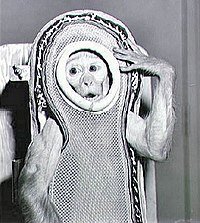
The first living beings sent into outer space were fruit flies. Sent to test the effects of radiation on DNA, they flew in a V2 rocket to a height of 106 miles and returned to earth alive.
In 1948 Albert, the first monkey to be sent, only made it to 39 miles (the term “space” only applies to the Kármán Line 62 miles above the earth surface) and suffocated at some point during the trip.
In 1949 Albert II, a male rhesus monkey, made it to a height of 83 miles in a V2 rocket but died with the impact of landing.
After Albert II, a number of other monkeys flew aboard rockets, but none survived the flight.
The post Monkeys Into Outer Space appeared first on Enemy in the Mirror.
February 4, 2019
Bollywood
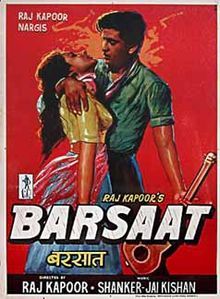
This clip is from Barsaat, a 1949 Bollywood film directed by Raj Kapoor. The film stars the famous duo of Kapoor and Nargis as well as Prem Nath. Barsaat, one of the first major hit films directed by Kapoor, allowed him to buy RK Studios in 1950.
The name Bollywood, a mixture of Bombay (Mumbai) and Hollywood, is often used to summarize all movies produced in India.
After the French Lumiere brothers arrived in 1896 to introduce their cinematograph, Bombay became the center of the Hindi cinema industry .
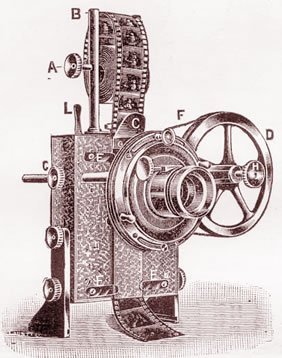 Cinematograph machine (Cecil Wray And Cecil Baxter)
Cinematograph machine (Cecil Wray And Cecil Baxter)Dadasaheb Phalke, often called the father of Indian cinema, made his first full-length movie in 1913 with both male and female characters played by men. By the 1930’s, 200 movies per year were produced in India.
The post Bollywood appeared first on Enemy in the Mirror.
January 31, 2019
Cardinal Mindszenty
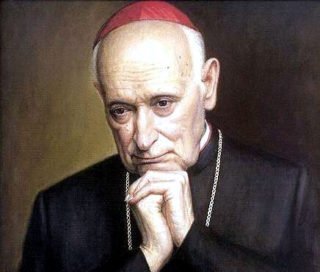
In February 1949 Cardinal Joseph Mindszenty was convicted of treason by the Hungarian Communist People’s Court.
The Cardinal had been an outspoken critic of the persecution of Jews by the Hungarian fascist government during WWII. After WWII, he denounced the Communist government for political oppression and limiting religious freedom.
In 1948 Cardinal Mindszenty was arrested along with several others for various crimes including: treason, trying to overthrow the government and speculation in foreign currency.
Prosecutors produced documents said to implicate the Cardinal in antigovernment activities. The Cardinal admitted he was guilty “in principle” of most of the accusations, but denied any intention to overthrow the Hungarian government. He was convicted and sentenced to life imprisonment.
In June 1956, widespread protests installed a reformist Hungarian government, and Cardinal Mindszenty was released from prison. However, when Soviet troops entered the country to put down anticommunist protests in November 1956, Mindszenty took refuge in the U.S. embassy where he remained until 1971. Recalled by the Vatican, he lived in Vienna until his death in 1975.
The post Cardinal Mindszenty appeared first on Enemy in the Mirror.
January 28, 2019
Nonstop Around-the-World
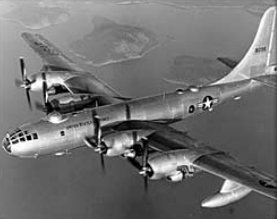
Flying out of Fort Worth, Texas, a United States Air Force Boeing B-50 Superfortress named Lucky Lady II made the first non-stop around-the-world flight in February 1949.
With in-flight refueling, the 94-hour trip covered 23,452 miles at an average ground speed of 249 miles per hour.
The post Nonstop Around-the-World appeared first on Enemy in the Mirror.
January 24, 2019
45 RPM RECORDS
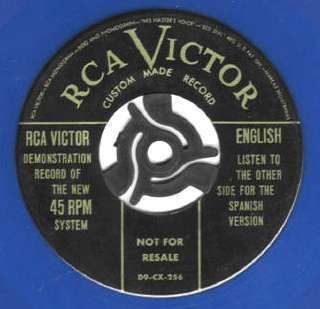
In March 1949, RCA Victor released 7- inch 45 revolutions per minute (RPM) records as smaller, higher-fidelity replacements for the 78 rpm shellac discs.
The first 45 rpms were monaural and recorded on both sides. Almost all 45 rpms were produced in stereo by the early 1970s.
The post 45 RPM RECORDS appeared first on Enemy in the Mirror.
January 21, 2019
Civil Rights 1949
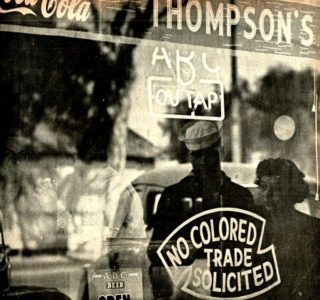

The Law of Civil Rights and Civil Liberties: A Handbook of Your Basic Rights, by Edwin S. Newman, Oceana Publications 1949.
In 1949, racism was still firmly rooted in the laws of many individual statest in the United States of America.
States without stripes or polka-dots had laws in place forbidding discrimination.
Striped states enforced or permitted segregation.
States with had no laws in place bear polka dots.
Numbers indicate the passage of laws either supporting or condemning segregation in particular arenas of public life.
Source: Rebecca Onion in Slate.com history blog, October 14, 2014
Meanwhile, if you’re white, you’re alright………
The post Civil Rights 1949 appeared first on Enemy in the Mirror.
January 17, 2019
Network Television
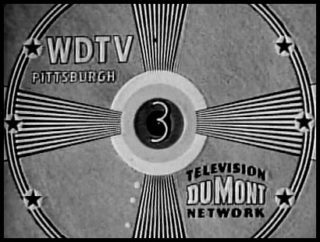
In January 1949 WDTV on Channel 3 (owned and operated by the DuMont Television Network, a TV equipment and set manufacturer) became the first American “networked” television station, providing a link between thirteen Midwestern and East Coast stations from Boston to St. Louis.
To mark the occasion, a live evening television special aired on WDTV with a local broadcast from the Syria Mosque performance hall in Pittsburgh and live segments from DuMont, CBS, NBC, and ABC featuring Arthur Godfrey, Milton Berle, the DuMont host Ted Steele and other celebrities.
Despite its broadcast innovations and features such as the TV star Jackie Gleason, the Dumont Network was never financially successful and went off the air in 1956.
The post Network Television appeared first on Enemy in the Mirror.
January 14, 2019
Council for Mutual Economic Assistance
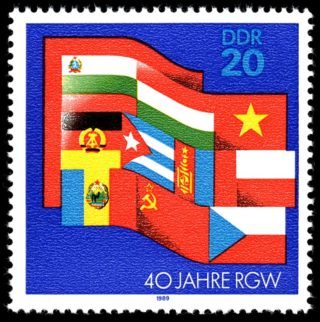
In 1949, in response to the 1947 U.S.-backed Marshall Plan, eastern European countries established the Council for Mutual Economic Assistance (COMECON) to facilitate and coordinate economic development of the eastern European countries belonging to the Soviet bloc.

COMECON’s original members included: the Soviet Union, Bulgaria, Czechoslovakia, Hungary, Poland and Romania.
Although Albania joined COMECON in 1949, it ceased taking an active part at the end of 1961. The German Democratic Republic became a member in 1950 and the Mongolian People’s Republic in 1962.
The post Council for Mutual Economic Assistance appeared first on Enemy in the Mirror.
January 10, 2019
Pingjin Campaign
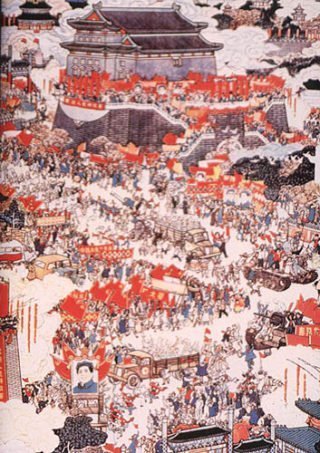
 Pingjing Campaign (Wikipedia)
Pingjing Campaign (Wikipedia) People’s Liberation Army enters Peking January 1949 (Wikipedia)
People’s Liberation Army enters Peking January 1949 (Wikipedia)The Pingjin Campaign was part of the three major campaigns launched by the People’s Liberation Army during the late stage of the Chinese Civil War against the Nationalist government of the Republic of China.
The term Pingjin refers to the cities Beiping (now Beijing) and Tianjin.
The campaign, lasting from November 29 until January 31, 1949, marked the end of Nationalist dominance in northern China.
The post Pingjin Campaign appeared first on Enemy in the Mirror.
Enemy in the Mirror
I began by posting events around the turn This website www.enemyinmirror.com explores the consciousness, diplomacy, emotion, prejudice and psychology of 20th Century America and her enemies in wartime.
I began by posting events around the turn of the 20th century as I was researching my first novel about the Pacific War. I continued through WWII for my second novel about the Battle of the Atlantic. Now I am beginning to look at the Cold War as I gather information for my next novel about the Korean War. ...more
- Mark Scott Smith's profile
- 7 followers


